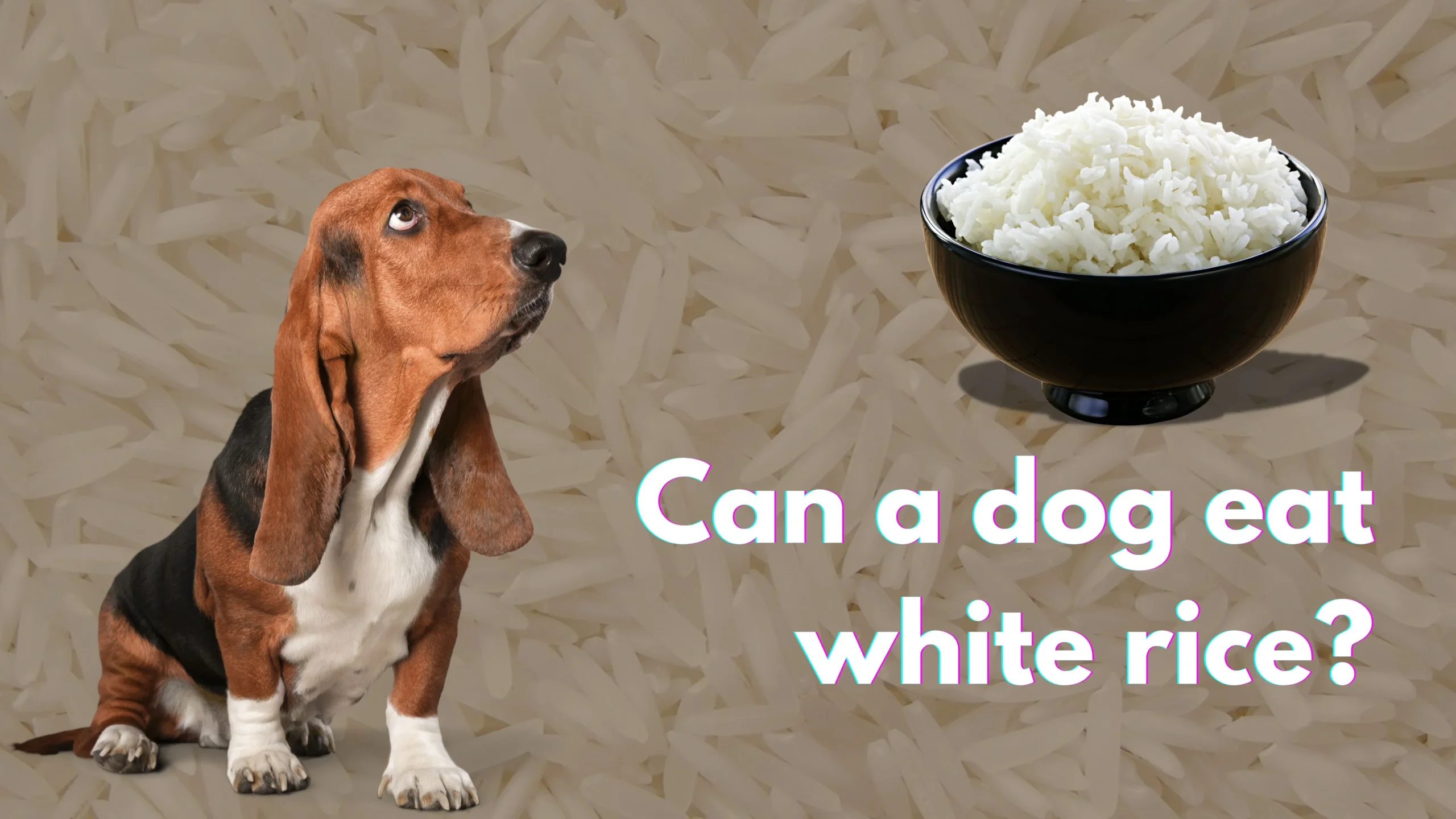Can A Dog Eat White Rice?
White rice is commonly recommended for dogs experiencing digestive issues, such as diarrhea, due to its blandness and ease of digestion. Can a dog eat white rice? Its starch content helps bind loose stool, while the fiber and easily digestible carbohydrates can aid in stabilizing your dog’s gastrointestinal system.
However, it should be fed in moderation, as white rice has a high glycemic index and may raise blood sugar levels, which can be a concern for dogs with diabetes or weight issues. Always consult a veterinarian before incorporating rice into your dog’s regular diet.
While rice is a common ingredient in many commercial dog foods, not all dogs tolerate it equally. Some may have allergies or sensitivities to rice, while others may simply prefer different grains. When preparing rice for your dog, it’s crucial to serve it plain, without spices or salt, as these can be harmful.
Rice can be a beneficial addition to your dog’s diet, but it should complement their balanced meals and be introduced with care, especially for dogs with specific health conditions. Always seek professional advice to ensure your dog receives the proper nutrition.
Is Rice Suitable For Dogs?
Rice can be a nutritious and safe addition to your dog’s diet, provided it is adequately prepared and given in moderation. While brown rice is more nutrient-dense due to its higher vitamin and fiber content, veterinarians often recommend white rice for dogs experiencing digestive issues such as diarrhea. Its quick cooking time and easy digestibility make it a go-to remedy for calming upset stomachs. However, due to its higher glycemic index, white rice can raise blood sugar levels, so it should be given sparingly to diabetic dogs.
Both brown and white rice are non-toxic and packed with essential vitamins and minerals, including magnesium, iron, and B vitamins. Though complete dog foods typically provide all the necessary nutrients, adding a small portion of rice to your pet’s meals can offer digestive relief without impacting their overall nutrition. Whether using rice to soothe gastrointestinal problems or simply as an occasional treat, it’s essential to monitor your dog for any adverse reactions like itching or hair loss. Always consult your vet if introducing rice into your dog’s diet for the first time.

Health Benefits Of White Rice
White rice is often the go-to option for dogs dealing with gastrointestinal issues due to its easy digestion and quick preparation. While it’s lower in protein, fat, and fiber than brown rice, white rice is higher in calcium and iron and contains folate when enriched. It is especially helpful in binding loose stool during bouts of diarrhea while also providing enough fiber to relieve mild constipation. Though brown rice has more vitamins, minerals, and fiber, white rice is better suited for dogs with minor intestinal issues because it’s easier to digest.
For dogs needing energy-rich foods, rice can be a great source of carbohydrates. While brown and white rice come from the same plant, white rice is processed by removing the germ and husk, making it less nutritious but ideal for easing digestion. It’s low in fat and sodium and can support good bacteria in the intestines. However, adding rice to a dog’s balanced diet should be done carefully, and consultation with a vet or veterinary nutritionist is recommended for homemade diets to ensure all nutritional needs are met.
How Much Rice Can My Dog Eat?
Rice can be beneficial to your dog’s diet, but it should be given in moderation. As a carbohydrate-dense food, rice can contribute to weight gain if consumed excessively, especially when paired with commercial dog food, which often already contains rice. Carbohydrates are essential for providing energy, but dogs also require a balanced diet rich in protein, vitamins, minerals, and healthy fats. To avoid health risks like obesity or digestive issues, it’s essential to follow the 10% rule—rice and other treats should only make up 10% of your dog’s daily caloric intake.
While rice can help with digestive issues like diarrhea, it shouldn’t be a daily staple in your dog’s diet. Too much rice can lead to constipation or stress on their digestive system. For large dogs, around ⅓ cup of rice two to three times a week is sufficient, while smaller dogs need even less. Introduce rice gradually and monitor your dog for any signs of digestive discomfort. Ultimately, rice should be considered an occasional treat, not a regular meal, to keep your pet healthy and prevent long-term issues such as weight gain or diabetes.

How to Prepare Rice for Your Dog?
When choosing rice for your dog, opt for a high-quality, organic variety. Begin by rinsing the rice thoroughly to remove excess starch. Soak the rice in hot tap water for 8-10 hours, using a ratio of 6 cups of water for every cup of rice. Throughout the soaking process, drain and rinse the rice multiple times.
After soaking, cook the rice by bis also higher in calcium, iron, and folate but has a high glycemic index, which can raise blood sugar levels, particularly for dogs prone to diabetes. While brown rice offers more vitamins and minerals, white rice is usually preferred for its gentler impact on sensitive stomachs.
Although rice is a safe and nutritious option for many dogs, it’s essential to be mindful of potential risks. Excessive rice in a dog’s diet can lead to high blood glucose levels and, over time, arsenic buildup, mainly if rice is a regular component of their meals.
Some dogs may also show allergic reactions or sensitivities to rice, resulting in symptoms like itching, hair loss, or GI issues. Introducing rice in moderation is crucial, ensuring it’s plain and free from added spices or sauces. For dogs with specific dietary needs or allergies, it’s always best to consult a veterinarian before introducing rice or any new food.
Ways to Serve Your Dog Rice:
For dogs experiencing gastrointestinal issues, veterinarians often recommend a bland diet of white rice and boiled chicken, as both are easy on the digestive system. White rice, in particular, is favored for its digestibility and ability to help soothe and balance an upset stomach, allowing dogs to return to their regular diet eventually. Preparing the rice without any seasonings or fats is crucial, as it can irritate your dog’s stomach. Cooking should involve rinsing the rice to remove excess starch and then boiling it in plain water or a low-sodium broth.
While plain rice is a safe choice, other variations, like fried rice, are unsuitable for dogs due to harmful ingredients such as soy sauce, fats, onions, and garlic. Beans can be a healthy addition to a dog’s diet when combined with rice, providing valuable nutrients like vitamins, protein, and fiber. However, beans should be well-cooked and seasonings-free to avoid gastrointestinal discomfort. Healthy dogs might also enjoy a mix of rice, dog-safe vegetables, and meats, creating a nutritious and tasty meal option.







